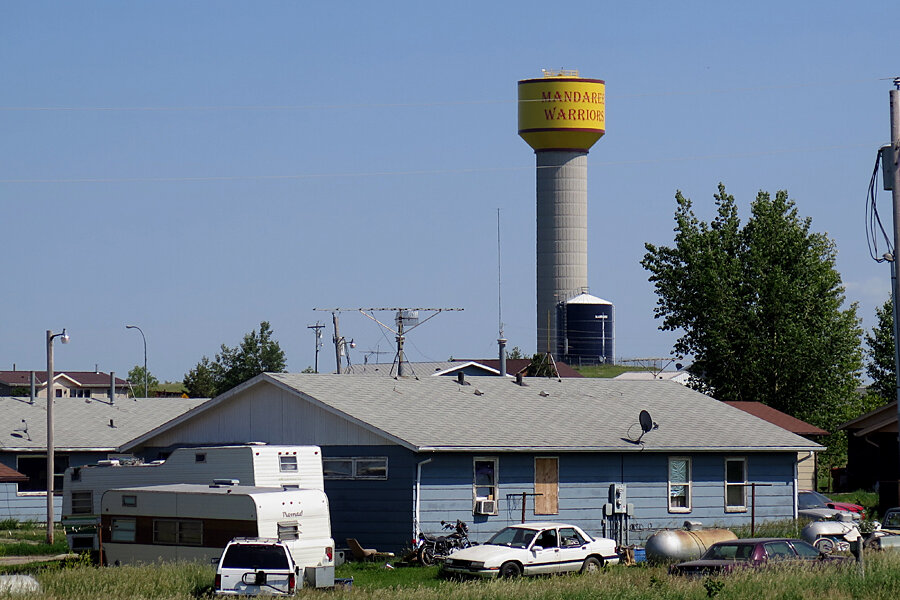What's slowing the spread of a North Dakota pipeline spill? Beaver dams.
Loading...
Beaver dams have so far prevented about 1 million gallons of fracking wastewater discovered spilled July 8 from a rural North Dakota pipeline from spreading too far. But area residents, environmentalists and even a Republican state legislator all want more reliable measures.
The spill of the toxic saltwater, a byproduct of hydraulic fracturing, came from gas extraction operations at the Fort Berthold Indian Reservation and occurred days before it was discovered.
The federal Environmental Protection Agency said the underground pipeline spilled about 24,000 barrels, or 1 million gallon, in North Dakota’s thriving oil and gas region. The water, which can be 10 times saltier than seawater and contains salt and fossil fuel condensates, was being piped away from fuel extraction sites for safe disposal.
The spill has been threatening Bear Den Bay on nearby Lake Sakakawea, which provides water for the reservation occupied by the Arikara, Hidasta and Mandan tribes, though the EPA said there is no evidence that the lake has been contaminated.
In fact, it said, most of the saltwater had pooled near where it had spilled and that beaver dams in the area had kept it from spreading. As a result, the EPA said, the local soil has simply been absorbing the spill.
That’s a bit too fortuitous for Wayde Schafer, a spokesman for the Sierra Club in North Dakota. He said there have been four other spills in the region recently, including three caused by lightning strikes and a fourth attributed to a cow that rubbed against a tank valve. (Related Article: 5 Things You Probably Don’t Know About Fracking)
With its current oil and gas boom, North Dakota has become the second most productive energy state behind Texas. By relying greatly on fracking, though, it also produces millions of barrels of wastewater daily that, like nuclear waste, must be buried underground forever.
In 2013 alone, there were 74 pipeline leaks that spilled 22,000 barrels of saltwater. Yet that same year, the North Dakota Legislature voted 86 to 4 against a bill that would have mandated flow meters and cutoff switches on wastewater-disposal pipelines. Energy companies protested the cost of such measures, and even state regulators argued they wouldn’t detect small leaks.
State Rep. Dick Anderson, a Republican farmer from Willow City, about 140 miles northeast of Lake Sakakawea, wants the legislature to reconsider the bill. He said a revised bill should require energy companies to conduct more frequent examination of the wastewater pipelines, including dogs trained to sniff for spills and even aerial drones that can spot pipeline breaks.
Arrow Pipeline LLC, which owns the pipeline whose spill has been threatening Lake Sakakawea, said the accident wasn’t discovered until employees were reviewing reports on production losses.
Crestwood Midstream Partners LP of Houston, which owns Arrow Pipeline, said the cleanup is likely to last for weeks.





